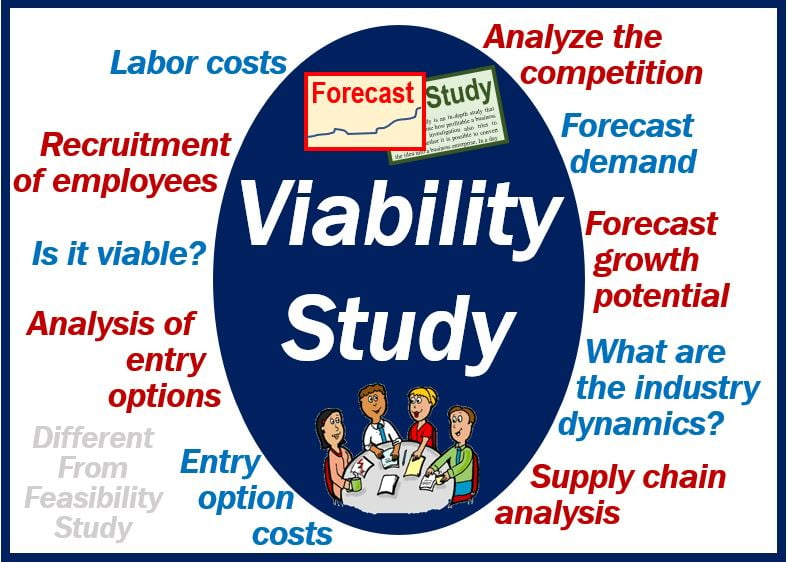Viability Study is an in-depth study that tries to determine how profitable a business idea is. The investigation also tries to determine whether it is possible to convert the idea into a business enterprise.
In medicine, a viability study of the heart, for example, tries to determine whether the heart muscle is alive. This type of study also tries to determine whether the patient needs a revascularization procedure.
This article focuses on the meaning of the term in a finance or business context.
Viability study – is it viable?
The word viability, a mass noun, refers to something’s ability or capacity to work successfully. It could be a proposal, idea, project, or even a plan to change how a company does business.
A viability study tries to determine whether something is viable.
Viable
The word ‘viable’ is an adjective. If something is viable, it means that it can work successfully. If a company is viable, it means that we expect it to make a profit year after year.
Viable refers to anything or any situation which can carry on developing, growing, advancing, or thriving.

Viability study vs. feasibility study
People often use the two terms interchangeably. However, they do not have the same meaning.
Feasibility study
A feasibility study is an assessment of how practical or doable a proposed method or plan is. It is an analysis that tries to find out whether it is possible to complete a project, successfully.
Viability study
A viability study is an investigation into a business idea. Specifically, whether the idea will make money, i.e., whether it will be profitable.
The viability study is not about whether something is doable, but rather whether it is worth doing.
Put simply; a feasibility study looks at whether something can be done, while a viability study looks at whether it is worth doing.
However, a growing number of feasibility studies today also include an analysis of the expected profitability of a project or idea.
Viability studies often incorporate market analysis to ensure that a business concept aligns with current market conditions and consumer trends.
